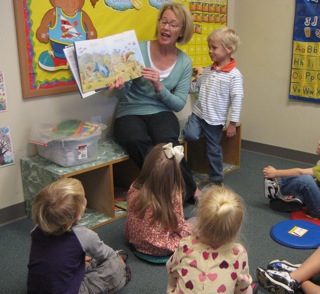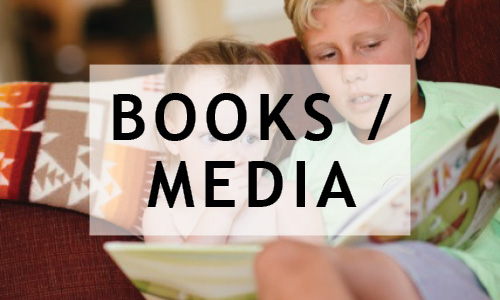 I have blogged before about how ineffective some programs are that are marketed to parents of young children, claiming they will teach your baby, toddler and preschooler to read.
I have blogged before about how ineffective some programs are that are marketed to parents of young children, claiming they will teach your baby, toddler and preschooler to read.
Recently, I was stopped by a wonderful mom of a 4 and 2 year-old who asked me my opinion of the Leapfrog Tag system and if it was helpful in teaching her child to read. I’ll save my opinion on that for another day, but I thought it would be helpful to share what I know does help prepare your preschooler for reading and builds emergent literacy skills. Pick up a great picture book (I will use the “Pout Pout Fish in the Big-Big Dark”) and use some of these strategies:
- Point out the title and ask your child what she thinks the story will be about? A fish? A fish in the dark? Will he like it or not? How would you feel?
- Talk about what we call the person who wrote the book, the “author.” After reading this book to Will and his brother, Ben, we went around in a circle and added on to a made up story. When we finished I said, “Who was the author of that story?” They proudly said, “We were!” Talk about who the illustrator is.
- Read with the rhythm of the book. This book has a delightful bounce to it. Read slow enough to emphasize great words and new vocabulary–“a doozy of a drowsy”–someone was tired!
- Talk about the illustrations, ask what and where things are.
- Look at Ms Pearl’s mouth.How does she feel? Talk about emotions, name them and explain why. “She is sad because she lost her pearl.”
- Have fun reading words that are fun to say, “swooped through the water,” and “swishing close to land.”
- Read with intonation and different voices. Whisper for Ms Shimmer and try to find her hiding in the ocean. Use a quivery voice for, “I’m scared of the dark.”
- Point to and emphasize words in large bold print. “I’m FAST as a sailfish, I’m STRONG as a shark…” Kids will start to associate a spoken word with a printed word.
- Pause on a page for your child to point anything out or comment.
- Emphasize repeated stanzas and as your child gets familiar with the book, leave off the last word or phrase until they can recite the whole thing! Follow the words with your finger as they “read” back to you.
- Make connections between the book and your child’s life. The whole gang gathered and swam in a circle at the end to celebrate finding Ms Clam’s pearl–just like your circle time at school.
- Say, “The end,” at the end of the story. Children will start to learn that there is a beginning, middle and end to a story, preparing them to eventually create and write their own stories with a beginning, middle and end.



